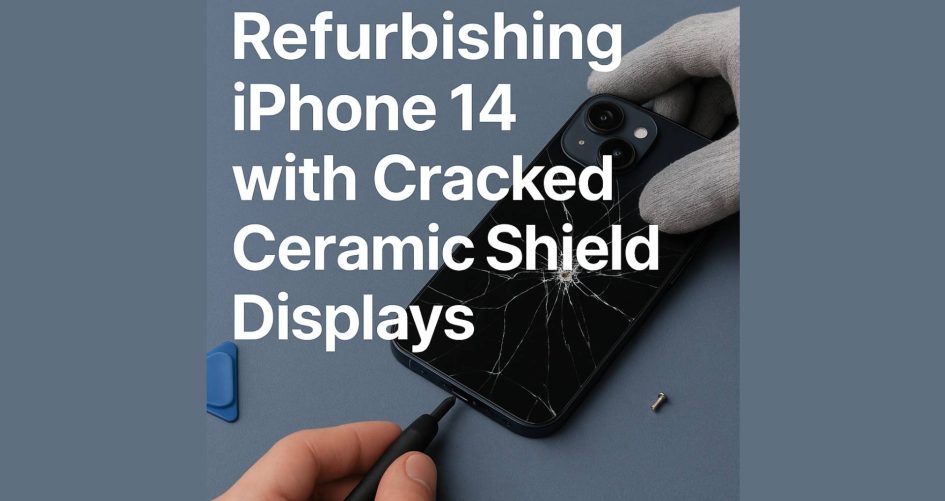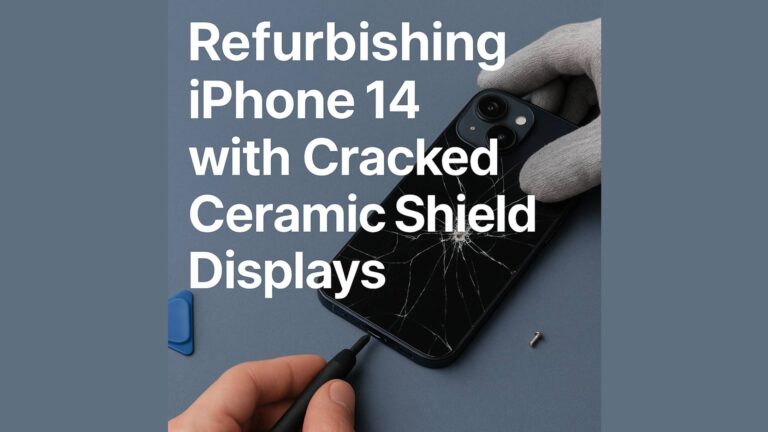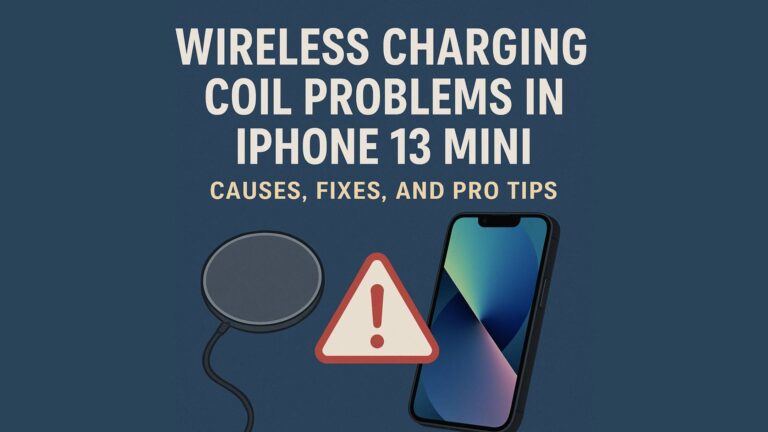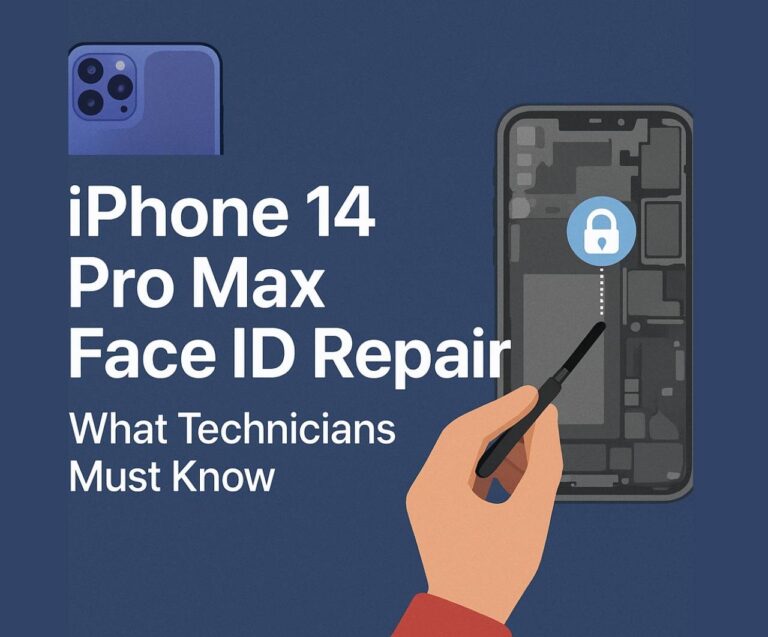The increasing demand for iPhone 14 ceramic shield repairs has brought fresh challenges—and big opportunities—for refurbishers. As more devices hit the secondary market with broken front glass, learning how to execute cracked screen repair the right way using high-quality iPhone display parts has become essential for every mobile technician and wholesale refurb expert.
From laser separation to reassembly calibration, this article will walk you through everything you need to know to refurbish iPhone 14 displays like a pro. Know more.
iPhone 14 Ceramic Shield Damage on the Rise
Apple claims its iPhone 14 ceramic shield is tougher than any smartphone glass. While that’s true in lab conditions, the reality in the refurb world is different. Once dropped, ceramic shield cracks easily—leaving otherwise functional phones with shattered displays. Technicians are now facing an uptick in cracked screen repair cases, with refurb markets scrambling to source the right iPhone display parts to meet the growing demand.
What Is iPhone 14 Ceramic Shield?
Apple’s ceramic shield isn’t your average glass. It’s made by embedding nano-ceramic crystals into a glass matrix, creating an ultra-hard but somewhat brittle surface. This unique material:
- Improves drop resistance
- Maintains touch sensitivity
- Increases shatter risk if improperly heated or handled
Compared to Gorilla Glass, ceramic shield is more resistant to scratches but trickier to separate during repair.
Why iPhone 14 Ceramic Shield Is Harder to Repair
The difficulty lies in its dual properties—tough, yet fragile. During cracked screen repair, heat application must be precise. Excess heat can cause:
- Full shattering of the screen
- Damage to OLED layers beneath
- Warping of display flex cables
Additionally, Apple uses strong OEM adhesives that resist traditional heat separation, requiring specialized tools.
Diagnosing Cracked Screen Repair Needs
Before you begin any iPhone 14 ceramic shield job, assess the damage carefully:
- Surface scratches may not warrant replacement
- Microcracks can often be restored with glass-only replacement
- Full spidering or touch failure usually requires full display assembly swap
Use tools like multi-point touch testers and True Tone diagnostics to ensure you’re solving the right problem.
Can Ceramic Shield Be Separated or Must It Be Replaced?
In many cases, the answer is: it depends.
| Condition | Recommended Solution |
| Glass cracked, display & touch OK | Glass-only replacement with LOCA or OCA |
| Touch issue, display flickering | Full screen assembly replacement |
| Face ID not working post-drop | Sensor recalibration required after repair |
High-end refurbishers often use OCA (Optically Clear Adhesive) lamination to restore the screen without replacing the entire display—saving cost.
Sourcing the Right iPhone Display Parts for Refurbishment
Finding top-quality iPhone display parts is the cornerstone of profitable repairs. Here’s how to source them:
- OEM refurbished screens (with original OLED)
- High-grade aftermarket LCD/OLED (ensure True Tone compatibility)
- Bulk wholesale from trusted suppliers in Shenzhen, HK, or certified B2B platforms
Always check for part numbers, packaging seals, and vendor reviews before purchasing.
Tools Required for Ceramic Shield Cracked Screen Repair
Don’t even attempt a ceramic shield repair without the following:
- Laser separator machine (CO₂ preferred for ceramic glass)
- OCA/LOCA lamination kit with UV light curing
- ESD-safe heat plate for controlled heating
- Frame alignment tools to prevent misfits
- Screen press clamp for flawless bonding
Having the right tools greatly reduces the chance of damaging sensitive components during disassembly.
Step-by-Step Refurbishing Process for Cracked Ceramic Shield
- Power off device and remove the pentalobe screws
- Use heat plate at 70–80°C to loosen adhesive
- Gently open using suction and plastic picks
- Disconnect battery and display flex cables
- Use laser separator to remove cracked glass
- Clean residual LOCA/OCA adhesive from OLED
- Apply new glass with UV adhesive
- Cure under UV light and press clamp
- Reassemble, test Face ID and touch
This method maintains the integrity of the OLED and lowers cost compared to full screen replacements.
iPhone Display Parts Calibration and Testing
Post-installation, it’s critical to:
- Transfer EEPROM data to preserve True Tone
- Run brightness and color uniformity tests
- Perform multi-point touch diagnostics
- Check for ghosting, flickering, or display bleed
This ensures the refurbished unit meets resale-grade standards.
Mistakes to Avoid in Ceramic Shield Repair
Even experienced techs make costly errors, such as:
- Overheating the panel, leading to OLED burn
- Neglecting proximity sensor placement
- Skipping True Tone transfer, which buyers notice
- Using low-grade glue, which causes future lifting
Avoid these pitfalls to maintain quality control.
How to Preserve Face ID and Sensors During Repair
When refurbishing iPhone 14 ceramic shield screens:
- Gently remove Face ID components with non-metal tools
- Avoid heat application near sensor zones
- Reinstall with proper alignment or you’ll trigger Face ID errors
- Always test sensors post-repair
A working Face ID adds serious value to refurbished devices.
Safety Tips for Handling Broken Ceramic Shield Glass
This material shatters into micro-shards that can cut skin and damage eyes. Always:
- Wear cut-resistant gloves
- Use goggles or face shields
- Operate in a ventilated, ESD-safe room
- Clean up with microfiber cloths and alcohol-based cleaners
Safety protects both the technician and the device.
Cost of Cracked Screen Repair: Ceramic Shield vs Regular Glass
| Repair Type | Avg. Cost (Parts + Labor) |
| Glass-only with OCA | $40 – $60 |
| Full OEM Display | $120 – $160 |
| Aftermarket OLED | $70 – $100 |
Refurbishers can increase margins by using OCA where possible, but should never compromise on part quality.
Refurbishing for Resale: What Buyers Look For
To maximize resale value:
- Ensure zero dust under the glass
- Keep True Tone and Face ID intact
- Polish the frame and screen after repair
- Grade the unit accurately (A, B, or C)
Presentation plays a major role in buyer confidence.
Wholesale Opportunities in iPhone 14 Display Refurbishment
The global demand for iPhone 14 refurb units is booming. Wholesalers can:
- Offer bulk screen refurb kits
- Create B2B partnerships with repair shops
- Focus on cost-efficient cracked screen repair packages
As the supply of cracked devices increases, so does the opportunity.
FAQs: Cracked Ceramic Shield Display Refurbishment
Q1. Can I refurbish iPhone 14 ceramic shield screens at home?
Only with the right tools and training—it’s not beginner-friendly.
Q2. Will Face ID still work after glass-only replacement?
Yes, if the sensors are untouched and aligned properly.
Q3. How long does ceramic shield screen refurb take?
Typically 45–60 minutes with experience.
Q4. Is True Tone lost after screen swap?
Yes, unless EEPROM data is transferred.
Q5. Are aftermarket iPhone display parts safe?
Some are. Stick to verified suppliers and test before resale.
Q6. What’s the risk of damaging the OLED under the ceramic shield?
High, unless temperature and pressure are precisely controlled.
Conclusion: Mastering iPhone 14 Ceramic Shield Refurbishment
The rise of iPhone 14 ceramic shield damage has made cracked screen repair one of the most profitable niches in the refurb world. With the right skills, tools, and iPhone display parts, technicians can offer reliable repairs while maintaining high resale value. For wholesalers and repair businesses, now is the time to scale operations and seize this growing opportunity. Know more.





